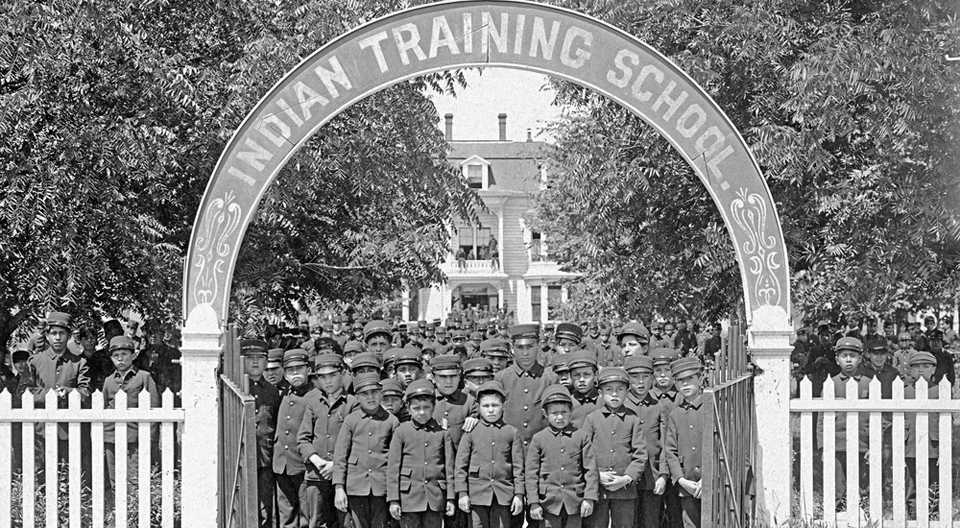
“Shit, my sister and cousin cried for days because of that. They were traumatized,” Leonard Peltier recalled, speaking of how he, his sister Betty Ann, and cousin Pauline Peltier were forcefully removed from his grandmother by the government and sent to boarding schools as children.
“Pauline was so traumatized she has never fully recovered,” the political prisoner said in an interview with People’s World. “You know, brother, I didn’t come to prison to become a political prisoner,” Peltier pointed out, “I’ve been part of the resistance since I was 9 years of age.”
The recent tragedy created at the southern border by President Trump, in which immigrant children have been cruelly torn away from their families and held essentially as political hostages has many Americans saying, “This is not what America is about. This isn’t what our country does. These are not our values.”
The reality, however, is that this country’s government has done a lot of this in the past—from Native children separated from their families and sent off to Christian boarding schools to African children stolen from their parents during slavery and more.
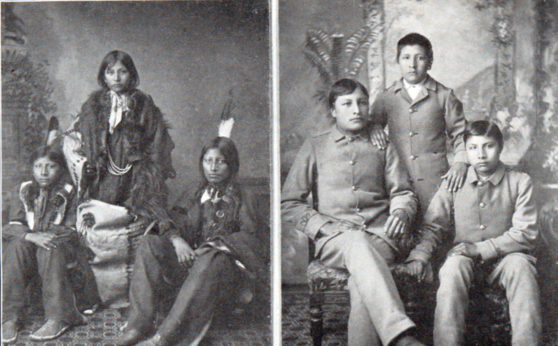
For Indian children, the boarding school experience began in 1860, when the Bureau of Indian Affairs established the first such institution on the Yakima Reservation in Washington state. The idea for such schools was devised by well-meaning middle class ‘reformers’ in the east like Herbert Welsh and Henry Pancoast, who had founded the Indian Rights Association to advocate for treaty rights after visiting Sioux agencies in Dakota.
“The goal of these reformers,” according to Northern Plains Reservation Aid, “was to use education as a tool to ‘assimilate’ Indian tribes into the mainstream of the ‘American way of life’.” The thought was that Indian children, by being placed into boarding schools, would absorb an appreciation for private property, material wealth, the Protestant work ethic, and monogamous nuclear families.
White men’s beliefs and social principles were thus equated with progress, and the task of ‘civilizing’ Indians required surrounding them with these value systems.
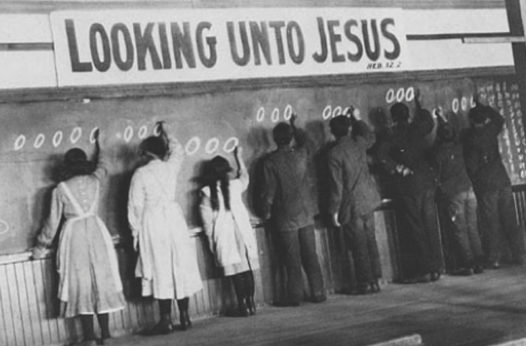
Again, Northern Plains Reservation Aid: “Boarding schools were the ideal instrument for absorbing people and ideologies that stood in the way of Manifest Destiny”—the 19th century notion that the United States was destined by God to expand its rule westward and spread capitalism and democracy over the entire North American continent.
The boarding schools were the educational arm of this effort, intended to assimilate each generation of Indian youth into white society. Along with learning English, arithmetic, science, and history, there were also the equally important aspects of ideological and cultural re-education. “Indian youth would be individualized. Religious training in Christianity would be taught. The principles of democratic society, institutions, and the political structure…. The end goal was to eradicate all vestiges of Indian culture.”
Early reformers used their religious beliefs to justify their Manifest Destiny perspective. It overflowed into Congress, which passed Manifest Destiny-themed bills. Indigenous people, meanwhile, were on the receiving end of this religious zealotry. Rape, abuse, kidnap, murder, and genocide were the end results for them. The recent quoting of Biblical scripture by Attorney General Jeff Sessions to justify the stealing of immigrant children from their parents shows that this ideology is still very much alive among at least some sectors of the U.S. government.
Many Indigenous Nations and citizens believe that nothing has changed in over 400 years. The government is still using faith to justify its actions.
This author’s recent story about Jim Wikel, a Seneca-Cayuga tribal member and environmental activist in Oklahoma, also reflects the outcome of government boarding schools, which amounted to forced segregation of Native children from their families and community. Brutal beatings and the forced loss of culture for Wikel’s maternal grandparents at the hands of government boarding schools is why his family didn’t discuss their heritage when he was growing up.
As mentioned, the goal of Indian boarding schools was to “assimilate” Native Americans into “white” culture. The early goals of Christian reformers very quickly got wrapped up into a strategic plan of the Bureau of Indian Affairs, the agency which had governmental oversight of the tribes. The culturally abusive tactics used in the schools were part of a bigger “colonization” strategy.
Wikel described how his grandfather was sent off to the Seneca Boarding School in Wyandotte, Indian Territory (now Oklahoma) in 1905 when he was only five years old. He was held at the school until he was 14. “Afterwards, he never spoke the language or went to ceremony again, and he never taught any of that to his kids,” Wikel said. “He drank himself to death when he was 43 years old.”
As the long-time U.S. Indian Service teacher and agent Albert H. Kneale noted in his 1950 autobiography Indian Agent, the U.S. Government “went on the assumption that any Indian custom was, per se, objectionable, whereas the customs of whites were the ways of civilization.”
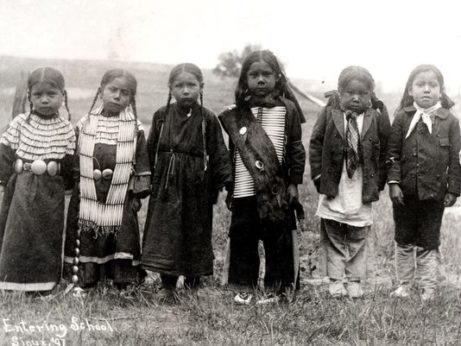
Trump’s disastrous immigration policy of today reflects the same ideology that has been deployed as a weapon against Indigenous cultures from the 1600s to the present. He denounces immigrants as rapists, killers, and animals—implying they must all come from an inferior culture. When his supporters claim that detained children are better off in detention than they were with their parents, the belief in (white) American society’s superiority is on full display.
Capitalism is still playing into the mythology of white Manifest Destiny, which goes back to the earliest colonial settlements. Trump’s policies are aimed at stoking the racist anger and resentment of his mass base, but they reflect the interests of the same oligarchy that Sen. Bernie Sanders assailed in his bid for the presidency. In every way, the current administration’s policies show favoritism to those at the top and seek any way possible to divide those outside the ranks of the super-wealthy.
Trump and his team’s “law and order” framework is the same one articulated by President Richard Nixon in the late 1960s and more subtly invoked by Presidents Ronald Reagan and Bill Clinton as they ramped up the drug war and fueled massive prison expansions during their times in office. We jail and separate families at the border to deter illegal immigration just as we jail and separate poor families within our country because they can’t afford bail or proper legal representation.
Major organizations and coalitions across the country, among them the National Indian Child Welfare Association, demanded the Trump administration end the forced separation of children and families at the border. NICWA said that the policy would not be over until every child is reunited with their parents safe and unharmed. [Editor’s note: As this article was going to press, a federal judge in San Diego ordered the immediate halt of family separation at the border and gave the government 30 days to reunite all separated children and parents.]
Most Indigenous people are all too familiar with the processes and actions that lead up to genocide; they’ve experienced it for over 400 years. They also see the progression of steps that the Trump administration has been taking in its demonization and dehumanization of immigrants. They recognize some of the same tactics from that old playbook.
They don’t want to see history repeating itself.


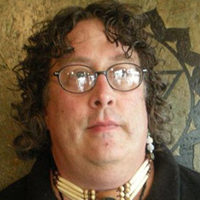

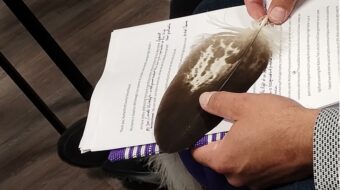







Comments